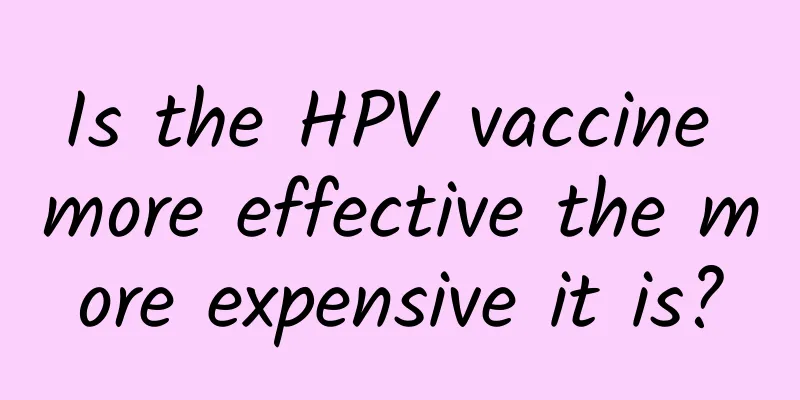Keyboard Man's "Mouse Hand" - Carpal Tunnel Syndrome

|
In today's society, information is exploding. People have gone from having a wife and children to having a warm bed, movies, television, mobile phones, computers, tablets, and smart phones. Almost overnight, electronic products have become a necessity for everyone from the elderly to young children. It has only been about 20 years, and no more than 30 years at most. However, the long-term use of electronic products may also cause health problems. The "mouse hand" of keyboard warriors is one of the most common ones. What is "mouse hand"? From a medical point of view, mouse hand is carpal tunnel syndrome. Next, let's spend a few minutes to understand its concept, symptoms, treatment methods and how to prevent it. A: Anterior view of the palm of the wrist; B: Schematic diagram of the horizontal section of the carpal tunnel 1. Transverse carpal ligament; 2. Carpal bones; 3. Median nerve; 4. Flexor pollicis longus tendon and tendon sheath; Triangle mark: Flexor superficialis tendon and tendon sheath; Round mark: refers to the flexor and extensor tendons and tendon sheaths Schematic diagram of the carpal tunnel walls and contents[1] 1. What is carpal tunnel syndrome Carpal tunnel syndrome: It is mainly seen in people who repeatedly bend and extend their wrists while working. Because the fingers and the associated muscles, nerves, and ligaments are in a state of constant fatigue, the carpal tunnel nerves are damaged or compressed, resulting in increased exudation and pressure in the carpal tunnel, blocking the conduction of the median nerve, and causing sensory and motor disorders in the hand [2]. Risk factors for carpal tunnel syndrome Occupational factors: long-term repetitive, rapid and frequent activities or operations such as hand extension, flexion and exertion, which increase the exudation and pressure in the carpal canal. Common occupational activities include keyboard operators (such as typists and computer operators), assembly line workers (such as various component assembly), manual workers (such as sewing, shoemaking, embroidery), music workers (such as pianists and accordion players), etc. Wrist injury: Wrist sprain, dislocation, fracture, etc. may cause structural changes in the carpal tunnel and compress the median nerve. Disease factors: Diseases such as diabetes, rheumatoid arthritis, gout, stenosing tenosynovitis, rheumatic autoimmune diseases, masses, and tumor-like lesions increase the risk of carpal tunnel syndrome by increasing the volume of the tunnels on both sides of the nerve, changing the tunnel contour, or causing neuropathy. The prevalence of carpal tunnel syndrome in diabetes is 30% [3]. Other factors: pregnancy, gender, menopause, obesity, alcoholism, etc. may also increase the risk of carpal tunnel syndrome. Domestic research shows that the prevalence of carpal tunnel syndrome in women is three times that of men[4]. 3. Clinical symptoms of carpal tunnel syndrome Common symptoms are pain, numbness, weakness and tingling in the hands and arms. As symptoms such as numbness and tingling in the fingers continue to develop, the hand functions are limited, movements become slow, and fine movements become difficult, causing many inconveniences in daily life and work. For example, long-term nerve compression can lead to atrophy of the hand muscles, seriously affecting the hand functions. In more serious cases, it can even lead to permanent nerve damage, causing irreversible hand dysfunction. Treatment of Carpal Tunnel Syndrome Drug treatment: Oral medications include antipyretic, analgesic, and anti-inflammatory drugs, glucocorticoids, and neurotrophic drugs. Topical medications are applied by rubbing, washing, steaming, etc. to the affected area to clear the meridians and regulate the flow of qi and blood [5]. Non-surgical treatment: Wearing a wrist splint or brace to support the wrist and change bad posture; extracorporeal shock wave therapy can promote the absorption of inflammatory factors in the wrist and relieve symptoms of nerve compression; acupuncture and moxibustion therapy can stimulate the corresponding acupoints to guide qi to the lesion to achieve the therapeutic effect [6]. Surgical treatment: Carpal tunnel release surgery relieves pressure on the median nerve by cutting the transverse carpal ligament, thereby improving patient symptoms [7-8]. 5. Prevention of Carpal Tunnel Syndrome Maintain good posture habits: adopt the correct sitting and standing posture when working, keep your wrists straight when using your hands to reduce wrist pressure. Take regular breaks: Rest for 10 to 15 minutes after every hour of work. Avoid maintaining the same posture for a long time or excessive bending or stretching. Do joint stretching exercises regularly. Strengthen exercise: Perform targeted wrist muscle and tendon exercises every day to improve nerve conduction ability, improve blood circulation, and relieve symptoms of median nerve compression. Assistive tools: Use an ergonomic mouse, keyboard, or wear a wrist guard. Conclusion Carpal tunnel syndrome is a common peripheral nerve compression syndrome. As long as we take active measures to prevent it, detect it early and treat it early, we can effectively avoid the harm it brings. From now on, pay attention to your wrist health and stay away from the trouble of "mouse hand"! References [1] Cai Lin, Du Meiling, Yang Yong, et al. Anatomical structural characteristics and clinical research progress of the carpal tunnel cavity[J]. Journal of Dalian Medical University, 2017, 3(39): 291-295. [2] Sun Guifan, Wu Tangchun, Niu Qiao, et al. Occupational Health and Occupational Medicine[M]. 8th edition. Beijing: People's Medical Publishing House, 2017: 72-73. [3]Genova A,Dix O,Saefan A, et al.Carpal Tunnel Syndrome: A Review of Literature[J].Cureus 2020,12(3): e7333.DOI 10.7759/cureus.7333. [4] Zhou Zehui. Epidemiological survey report on risk factors of 430 patients with moderate and severe carpal tunnel syndrome in Shenyang[D]. Shenyang: Shenyang Medical College, 2023. [5] Hou Qingyu, Yin Siyuan, Ma Ji, et al. Research progress on the pathogenesis and non-surgical treatment of mild to moderate carpal tunnel syndrome [J]. Journal of Jilin University (Medical Edition), 2024: 3(50): 1-6. [6]Padua L, Coraci D, Erra C, et al. Carpal tunnel syndrome: clinical features, diagnosis, and management[J]. Lancet Neurol. 2016, 15(12): 1273-128. [7] Qu Wei, Zhang Weiguo, Lu Ming, et al. Comparison of the efficacy of three different surgical procedures in the treatment of carpal tunnel syndrome[J]. Chinese Journal of Hand Surgery. 2007, 23(02):77-78. [8] Kim PT, Lee HJ, Kim TG, et al. Current approaches for carpal tunnel syndrome[J]. Clin Orthop Surg. 2014, 6(3):253-257. Source: Chongqing Science Writers Association Author: Huang Weilan, attending physician at Jiangjin District Center for Disease Control and Prevention, Chongqing Huang HuaDeputy Chief Physician Zou Jingbo, Chief Technician of Mr. Zou's Science Garden Audit expert: Li Hanbin Statement: Except for original content and special notes, some pictures are from the Internet. They are not for commercial purposes and are only used as popular science materials. The copyright belongs to the original authors. If there is any infringement, please contact us to delete them. |
>>: "Medicine" is not allowed | Expired medicines cannot be taken
Recommend
What is the girl missing when her palms sweat?
Sweating of the palms of girls may be caused by k...
What is the cause of bleeding before and after menstruation?
No matter under what circumstances, bleeding afte...
What does it mean when a girl says she is tired? How do you respond when a girl says she is tired?
We all know that many people feel tired during in...
Reasons for missing menstruation for four months
Many gynecological diseases occur frequently in d...
For this type of cancer, Chinese patients may be ten years younger than those in foreign countries?
The latest global cancer burden report shows that...
What kind of food is good for pregnant women?
In the early stages of pregnancy, due to the symp...
Cancer is mostly self-inflicted! Everyone is afraid of cancer, but cancer is also afraid of you: it is afraid that you will do these things...
Expert of this article: Hu Zhongdong, chief physi...
Choose the right milk and drink the right milk - A scientific guide to drinking milk
Milk is a source of high-quality protein, calcium...
Specially designed frame mirror, how to choose the frame?
Some parents followed the doctor's advice and...
There is dirt on my nipples when I'm pregnant
After a woman becomes pregnant, due to the body&#...
Let me see who is still comforting themselves with "drinking tea to remove fat"
Good! Rich! Abundant! Ah! "Eat more and eat ...
Causes of genital ulcers
Female genital ulcers are generally related to ce...
What causes little girl's hair loss?
There are many reasons for hair loss in young gir...
Is miscarriage a bad thing?
Some people may suffer a miscarriage if they are ...
Can a woman with a thin endometrium get pregnant?
The thickness of the endometrium is a criterion f...









